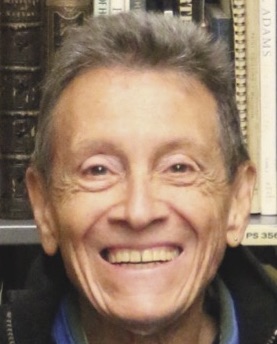 [As I indicated in the first post in this series, between September 6 and October 4 I spent my weekdays at the Institute of Art and Design at New England College, in Manchester, NH, on a Teti Photography Fellowship. You’ll find details of this program in that initial post; click here for part 2, and here for part 3. In this final installment I consider the collection’s current status and uncertain future. — A.D.C.]
[As I indicated in the first post in this series, between September 6 and October 4 I spent my weekdays at the Institute of Art and Design at New England College, in Manchester, NH, on a Teti Photography Fellowship. You’ll find details of this program in that initial post; click here for part 2, and here for part 3. In this final installment I consider the collection’s current status and uncertain future. — A.D.C.]
•
In addition to the research described in the previous posts in this series while in residence at the IAD@NEC earlier this fall, I also gave two lectures. One, as previously noted, held at the school itself, took the form of an updated version of my synopsis of the Capa D-Day project. Preceding that, off-campus, I delivered a very different talk, “Art and Perturbation: Social Responsibility and the Photographer,” which uses Robert Frank as one of three reference points (W. Eugene Smith and Jerry Uelsmann are the other two).
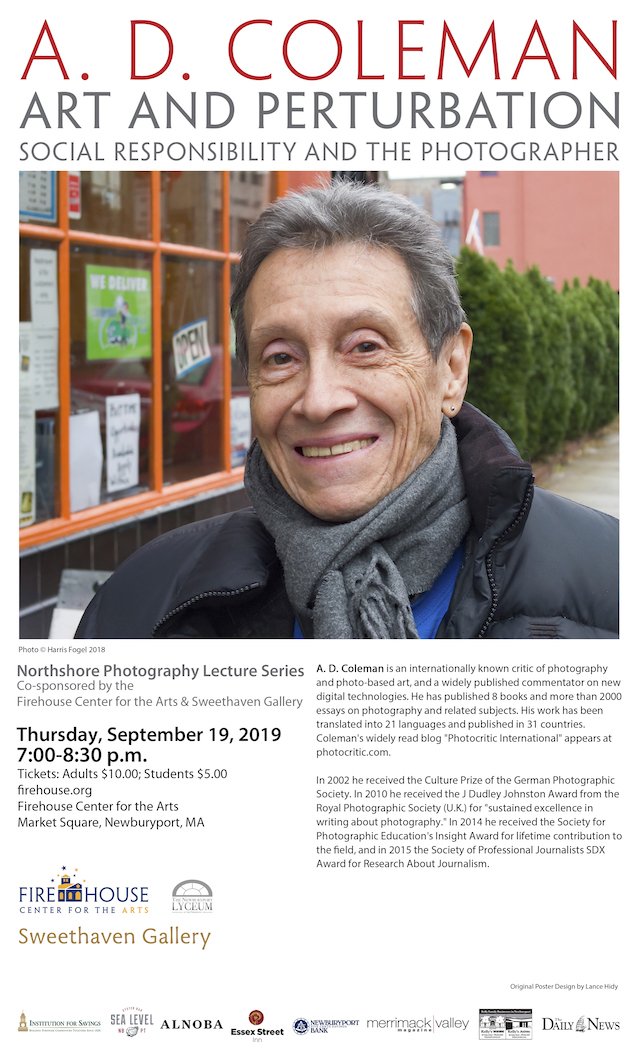
Poster, A. D. Coleman lecture, Firehouse Center for the Arts, Newburyport, MA, 9-19-19
•
Greg Nikas of Sweethaven Gallery in Newburyport, MA, which specializes in contemporary photography, organized this event in conjunction with my residency, as part of the gallery’s Northshore Photography Lecture Series. It took place at Firehouse Center for the Arts, also in Newburyport, on the evening of Thursday, September 19. Greg and I had agreed on the topic back in August, before Frank’s death on September 9; coincidentally, then, it gave me a chance to pay my respects once again to the late photographer for his work and his example.
![]() The Sweethaven lectures have included presentations by such diverse figures as Lance Hidy, Rania Matar and Lou Jones. So, in addition to its exhibitions, it provides an important educational service to the area’s audiences for photography, visual art, and contemporary culture. Alas, I learned later that month that an unexpected, steep increase in its rent may force Sweethaven Gallery to close its door. That would be a loss for all.
The Sweethaven lectures have included presentations by such diverse figures as Lance Hidy, Rania Matar and Lou Jones. So, in addition to its exhibitions, it provides an important educational service to the area’s audiences for photography, visual art, and contemporary culture. Alas, I learned later that month that an unexpected, steep increase in its rent may force Sweethaven Gallery to close its door. That would be a loss for all.
•
Beyond everything I have described so far, and the drafting of this series of posts about the fellowship experience in general and specific books that I discovered and engaged with during my stay, I took the opportunity to acquaint myself (and, in some cases, re-acquaint myself) with both famous and obscure photography books, as well as with some of the prints held in both the Teti Collection and the Thomas Adams Collection.
While not exactly quantifiable in terms of usefulness, all of this contributes to my knowledge base and experience in ways that will surely manifest themselves in subsequent work. This is one of the intangible benefits that an opportunity such as the Teti Fellowship provides to visiting scholars like myself.
 Yet the future of this remarkable collection appears uncertain, at least in the short term. The merger of the New Hampshire Institute of Art and New England College to form this new entity represents the absorption of the former NHIA, with a student body numbering around 300, into a larger undergraduate liberal-arts college with some 1000 students. While this creates synergistic opportunities in both directions, the NHIA was unquestionably the smaller fish in the pond.
Yet the future of this remarkable collection appears uncertain, at least in the short term. The merger of the New Hampshire Institute of Art and New England College to form this new entity represents the absorption of the former NHIA, with a student body numbering around 300, into a larger undergraduate liberal-arts college with some 1000 students. While this creates synergistic opportunities in both directions, the NHIA was unquestionably the smaller fish in the pond.
For NEC, NHIA’s 120-year-old roots in Manchester — the state’s largest city (pop. 111,000) — constitute one obvious advantage of the new partnership, which became official in January 2019. Indeed, Manchester has the largest population of any city in northern New England. By contrast, NEC — founded in 1946 to serve returning WWII vets of both sexes — has its campus in Henniker, NH (pop. 5000), 40 minutes away. So NEC not only adds a second campus to its footprint but also gains an immediate presence in the area’s most energized cultural scene.
This also constitutes a radical demographic shift for NEC. As I understand it, the student body of approximately 1000 at NEC includes roughly 100 involved in the visual arts, while the student body of roughly 300 at IAD consists entirely of such students. Thus the parent organization has gone relatively suddenly from having a visual-arts constituency of ten percent of its population to one of 35 percent. The remarkable Teti Collection thus serves fully one-third of its newly aggregated population — and that counts only the visual arts, whereas the collection pertains to wider issues of visual communication, cultural journalism, creative writing, cultural history, sociology, and other disciplines as well.
So the new, enlarged IAD@NEC entity would seem have sound reason, both pedagogical and fiscal, to capitalize on this collection in every way: To preserve it intact and continue to make it accessible to scholars, of course, but also to integrate its holdings into the curriculum at both campuses wherever it pertains; to recognize its marketing potential in attracting students, faculty, and other donors; and in various ways to let the world know that it exists.
Yet, with the ink barely dry on the deal, NEC has already placed the very building housing the Teti Collection, the one in which I worked during my residency, on the market, priced at $2,702,500 — along with two other NHIA buildings close by in central Manchester, and two more in the nearby towns of Sharon and Peterborough.
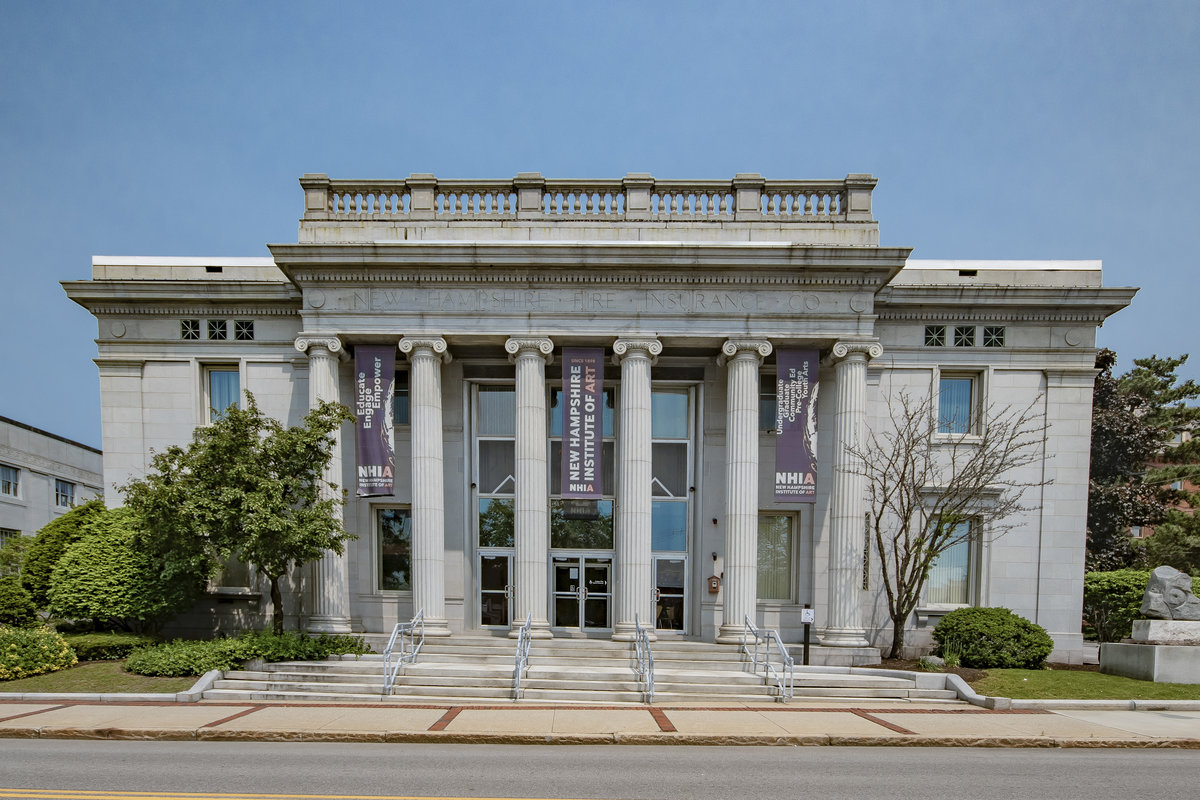
Fuller Hall (exterior), Institute of Art and Design at New England College, Manchester, NH
•
Lest this smack of the corporate raid, I hasten to add that all three structures in Manchester, while handsome early 20th-century buildings, struck me as less than ideal for housing components of a present-day visual-arts program. Their traditional, heterogeneous exterior and interior styles are definitely dated but not architecturally distinguished; their interior spaces do not readily suit the production and display of contemporary visual art; and they have proved difficult to retrofit for those purposes, and even more so for anything resembling energy efficiency in the cold northern New England climate. (Not to mention minimal available parking, problematic in the city center.)
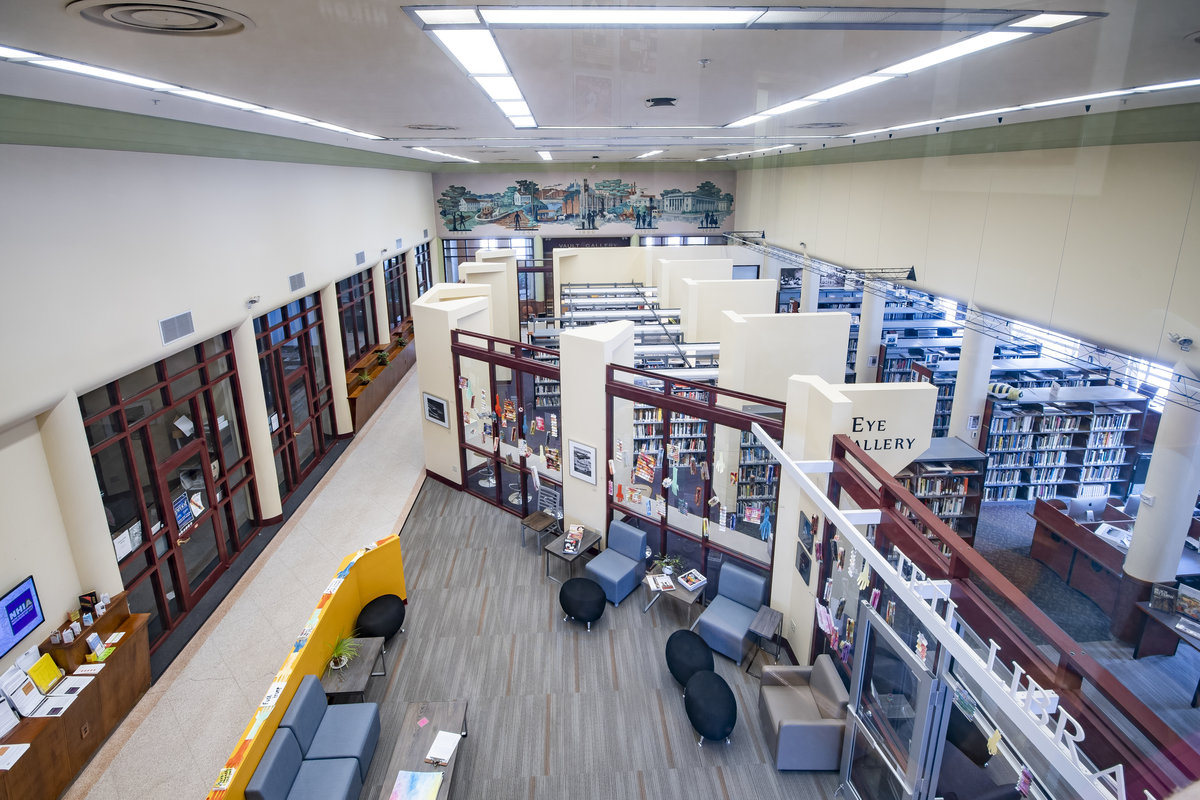
Fuller Hall Library (interior view), Institute of Art & Design at New England College
•
So I assume that the plan involves selling these buildings and then using the revenues to acquire ones more appropriate and modifiable for housing a 21st-century visual-arts program, so as to maintain and even expand the new conglomerate’s Manchester footprint. While this bodes well for the future of the IAD@NEC, it also means that if and when Fuller Hall gets sold the Teti Collection, along with the smaller Adams print collection and the IAD’s other holdings — including its substantial open library — will find itself effectively homeless. Or, more precisely, in storage, and possibly in limbo.
On the other side of that predictable yet (speaking optimistically) temporary situation, I would hope for several outcomes:
• that the IAD@NEC incorporate a suitable physical site for it into the design of its future physical plant;
• that the collection remain in Manchester, by far more accessible there to the school’s visual-arts students and faculty, as well as to visiting scholars and to the general public, than it would be if moved to the college’s relatively remote Henniker campus;
• that the entire donated collection get maintained as a complete, integral entity, assembled by an individual with a vision of it as a whole that merits the deepest respect;
• that any decisions regarding the deaccessioning of materials from the collection take place only after careful review by specialists in the field;
• that the IAD@NEC keep the scholarly community informed about the status of this important collection, its current location and situation, and plans for its future as those evolve; and
• that the NEC recognize and acknowledge the international importance of this unique, notable, and energetically solicited donation by embracing it: integrating it fully into the college’s interdisciplinary pedagogical practice, enriching the local and regional cultural scene by making its presence known through such means as exhibitions, lectures, and online resources, and continuing to encourage researchers from near and far to make use of its extraordinary contents.
As someone who now considers himself a permanent friend and supporter of the Teti Collection, I offer these as my desiderata and vision for its future. Let me add that the more use reputable scholars make of the collection the more attention they will draw to it, which will help the administration of the college understand its significance as a flagship component of the IAD@NEC and, indeed, of the NEC itself. So I encourage my colleagues to take advantage of this fellowship opportunity while it remains available. A word to the wise.
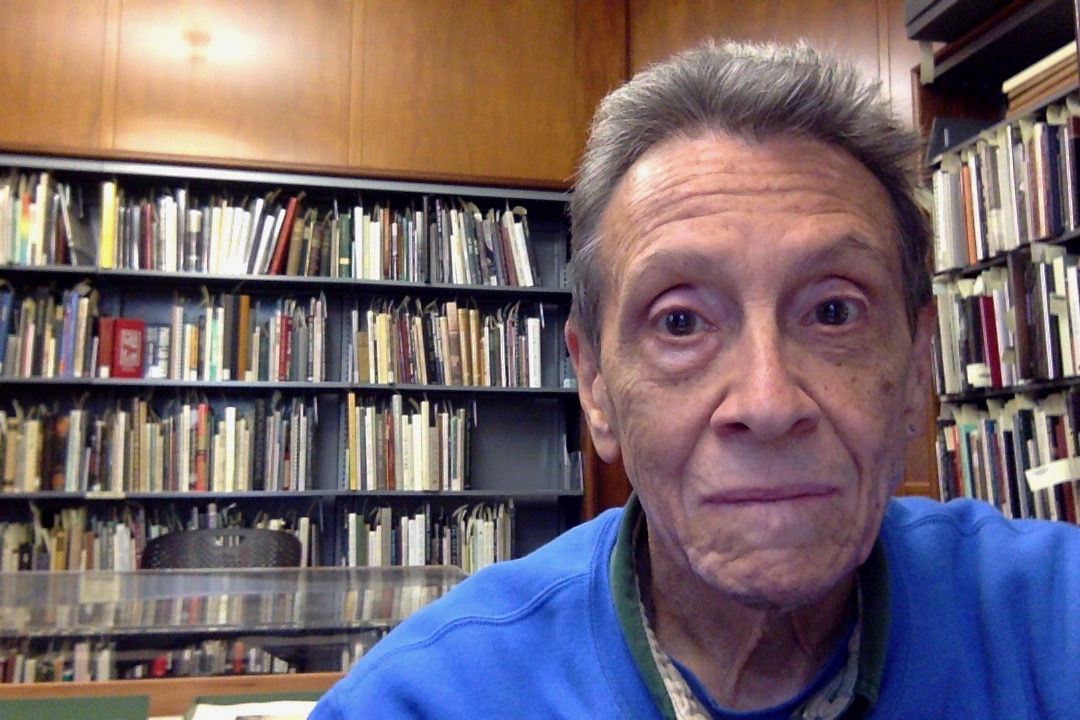
A. D. Coleman, self-portrait, Teti Collection, IAD-NEC, Manchester, NH, 9-24-19
•
This post sponsored by a donation from Carlyle T.
•
Special offer: If you want me to either continue pursuing a particular subject or give you a break and (for one post) write on a topic — my choice — other than the current main story, make a donation of $50 via the PayPal widget below, indicating your preference in a note accompanying your donation. I’ll credit you as that new post’s sponsor, and link to a website of your choosing.
 Include a note with your snail-mail address (or email it to me separately) and I’ll include three (3!) copies of The Silent Strength of Liu Xia, the catalog of the 2012-13 touring exhibition of photos by the dissident Chinese photographer, artist, and poet, who, after eight years of extralegal house arrest in Beijing, finally got released and expatriated to Germany in 2018. The only publication of her photographic work, it includes all 26 images in the exhibition, plus another 14 from the same series, along with essays by Guy Sorman, Andrew Nathan, and Cui Weiping, professor at the Beijing Film Academy. Keep one for yourself, share the others with friends.
Include a note with your snail-mail address (or email it to me separately) and I’ll include three (3!) copies of The Silent Strength of Liu Xia, the catalog of the 2012-13 touring exhibition of photos by the dissident Chinese photographer, artist, and poet, who, after eight years of extralegal house arrest in Beijing, finally got released and expatriated to Germany in 2018. The only publication of her photographic work, it includes all 26 images in the exhibition, plus another 14 from the same series, along with essays by Guy Sorman, Andrew Nathan, and Cui Weiping, professor at the Beijing Film Academy. Keep one for yourself, share the others with friends.






This has been a very interesting series on an important but little known academic and cultural resource. I hope the “new” institution’s Board hears what you are saying. My concern is that the current situation within higher education in New England (declining enrollment, revenues and government funding) that is causing “consolidation” will result in, not only realizing the cash value of real estate assets, but also liquidating highly valued art collections. It would be most unfortunate if the Board sees certain high profile works of art as a means to financial ends. With a sudden increase of art related degree students, perhaps this will not be the case. Fingers crossed.
Obviously, I share your concerns in this regard. I take some comfort in the fact that any substantial deaccessioning of materials from the collection, or its complete liquidation, would effectively scare off any future donors of physical materials such as this collection contains, and serve as a warning to potential donors in general. Hardly a consequence that any rational institutional administration would want to incur knowingly, in my opinion.
Should they move in that direction nonetheless, the best-case scenario would be for the Teti Collection to remain integral and move in its entirety to another institution that would welcome it, recognize its value as an organic whole, and maintain it intact. I would campaign toward that outcome, should it come to that, though of course I hope it won’t.
Thank you for your four-part series on your residency at the Teti Collection. With your serial articles, I find myself checking for the next installment every morning until it comes.